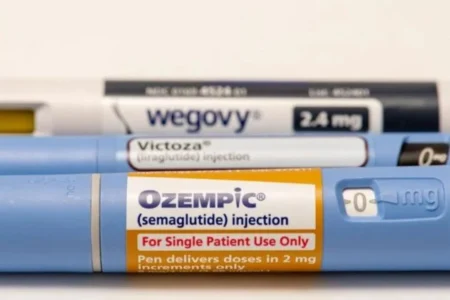The XXI Congress of the Spanish Pain Society (SED), will be held the next two days of 28, 29 and 30 May at the Trade Fair and Congress Centre of Malaga (FYCMA).
The press conference was attended by Francisco Cantos, Councillor for Social Rights, Diversity, Equality and Accessibility of Malaga City Council; Dr. María Madariaga, President of the SED; Dr. Mariano Fernández Baena, President of the Organising Committee, as well as Dr. María Luz Padilla del Rey, President of the Scientific Committee.
Francisco Cantos thanked the Spanish Pain Society for choosing Malaga as the venue for this XXI Congress and described it as an "immense honour and opportunity" for the city to host this forum which will bring together more than a thousand professionals and experts in the field of chronic pain.
"It is a pleasure for us to present this Congress which has as one of its main objectives to make the patient's life easier in the management of their pain.. New techniques and non-invasive interventions, which will be extensively discussed at this scientific meeting, make it possible to reduce this constant and chronic pain, which will undoubtedly improve your quality of life. We are convinced that this meeting will mean
a milestone and a new starting point for scientific research in this field," said Francisco Cantos.
The neuromodulationa system for delivering electrical stimuli to the nervous system, can reduce pain. up to a 80%according to the organisers of the XXI National Congress of the Spanish Pain Society (SED).
This technique is used in patients resistant to other treatments and "manages to improve their quality of life and functionality, as well as reducing the consumption of analgesics and alleviating the burden of care", according to Dr. Mariano Fernández Baena, president of the Organising Committee of the congress, in which results are shown with new non-invasive variants, such as ultrasound and Transcranial Magnetic Therapy.
In his opinion, it manages to reduce pain by at least half in 70% of cases, although "many times it is reduced by 70 or 80%", he points out. In the last year, its indications have been extended to diabetic polyneuropathy and pelvic pain, which join those for neuropathic pain (which affects 3 million Spaniards), complex regional pain and post-surgical pain.
In Andalusia, all provinces have neuromodulation services, and Seville, Malaga and Cadiz have the most patients receiving these implant techniques.
Until now, this system was only performed with surgical interventions, and one of the most innovative is the so-called surgery of suffering in neuropathic pain, pioneered by Dr. Gloria Villalba, coordinator of the Neurosurgery Service of the Hospital del Mar. It involves deep brain stimulation with electrodes implanted in the anterior dorsal cingulum. "It is a part of the brain that controls how it conditions me, or how the pain I feel makes me suffer. That is to say, this treatment does not try to modify the intensity of the pain, but rather it tries to make me not care so much about the pain I perceive, and consequently I can lead a better life, trying to enjoy activities and moments of daily life," he says. Thirty-five patients have already undergone surgery worldwide, seven of them in Dr Villalba's team.
Fibromyalgia and low back pain
The results of two non-invasive neuromodulation techniques are also presented at this congress. One of them is Transcranial Magnetic Stimulation,
which has already been used successfully in Parkinson's, depression and Alzheimer's and which achieves its best results in fibromyalgia, according to Dr Fernández Baena. The other technique is the use of high-intensity ultrasound (HIFU), a procedure pioneered by Dr Jordi Pérez, head of the Pain Clinic at the Hospital Clínic in Barcelona, who led the first application in humans and published the initial study on this innovative system.
HIFU concentrates ultrasound waves on a precise point of the body to generate heat and perform neurolysis without the need for needles. "Its advantages are obvious: it causes less pain, eliminates the risk of infection and avoids any type of bleeding, which is especially relevant in anticoagulated patients," explains Dr. Pérez.
In addition, because it does not require skin penetration or a surgical environment, it can be performed in the office, significantly reducing the time and resources required. It is a promising treatment, already approved in Europe and Canada," he says.
and currently in the marketing phase, which will allow more patients to be treated in less time", adds the specialist. In terms of its main indication, Dr. Perez
The most appropriate at present is for low back pain of facet degenerative origin, one of the most common causes of low back pain in people over 60 years of age.
Waiting lists
Despite these advances, the specialists meeting in Malaga stress that the most important thing to improve chronic pain care for the 9 million Spaniards who suffer from it is multidisciplinary management in primary care that includes non-pharmacological interventions, which requires training for healthcare professionals in pain management and the incorporation of other specialists, such as physiotherapists and psychologists. In Andalusia, 31.7% of the Andalusian population over 16 years of age reported suffering from chronic pain diagnosed by a health professional, which is equivalent to approximately 2,270,863 people.
The training of healthcare professionals in the assessment and treatment of pain has been shown to reduce waiting lists and healthcare costs, according to the conference organisers. Pain is the main cause of consultation in Primary Care (40%), according to various studies. Chronic pain represents an economic cost equivalent to 2.5% of Spain's GDP, but its impact on welfare (valued using welfare economics methods) is significantly higher, estimated at up to
7.3 times, according to the report The Impact of Pain on Social Welfare (February 2025), produced by the Grünenthal Foundation. This calculation includes healthcare costs, lost productivity and the impact on caregivers. Analgesics are the most prescribed group of drugs (13%) and half of them are opioids, according to the latest Survey on Alcohol and Drugs in Spain.
Costs
"Improving training in multidisciplinary pain management strategies (involving professionals such as physiotherapists and psychologists) and non-pharmacological alternatives could reduce healthcare costs and lost productivity," explains Dr Carlos Goicoechea, vice-president of the SED.
"It has been shown that limiting access to non-pharmacological treatments, such as physiotherapy and psychological support, can lead to increased reliance on analgesics. On the other hand, it has also been shown that informing patients about their pain management and about pain units makes it easier to seek specialised treatment, which reduces the need for repeat visits to primary care departments and overall healthcare costs," he adds.
"However, the public system has a great lack of physiotherapists and psychologists, even in pain units," warns Dr Fernández Baena.
"In the case of Andalusia, most pain units lack psychologists and physiotherapists, as key specialties that guarantee multidisciplinary care, as well as specific staff such as radiology technicians for the most advanced interventional techniques," he warns. In his opinion, "we have practically the same resources as 25 years ago, but the demand for care has multiplied, due to the increase in life expectancy, population and demands for quality of life. The announced Andalusian Pain Plan, which was intended to improve these figures by 2024, was never published," he complains.
According to SED estimates, waiting lists for pain units vary from one month to more than a year, depending on the hospital. This means "a significant reduction in quality of life and a skyrocketing health expenditure in opioid consumption, emergency room admissions and hospitalisations, as well as sick leave", adds the expert.






